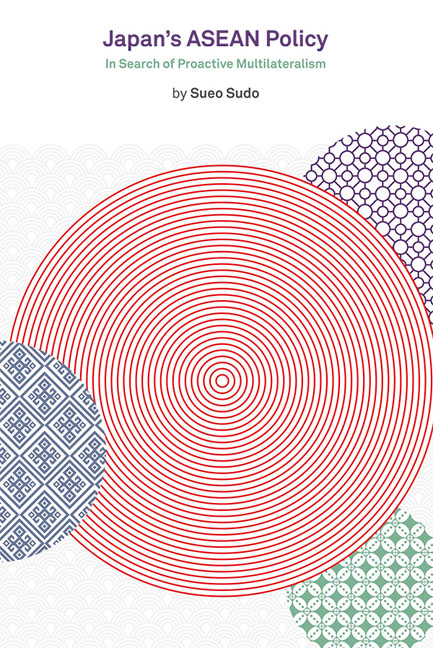Book contents
- Frontmatter
- Contents
- List of Figures and Tables
- Preface
- List of Abbreviations
- Introduction
- 1 ASEAN in Japanese Multilateral Foreign Policy
- 2 Embarking on Japan's ASEAN Policy: The Limitation of the Mainstream
- 3 Straightening the ASEAN-Indochina Divide: The Pursuit of the Alternative Stream
- 4 Consolidating an ASEAN-centred Policy: The Challenge of the Intermediate Stream
- 5 Fortifying a Japan-ASEAN Strategic Partnership: The Resurgence of the Mainstream
- 6 Towards a New Regionalism in East Asia
- 7 Conclusion
- Bibliography
- Index
- About the Author
- Frontmatter
- Contents
- List of Figures and Tables
- Preface
- List of Abbreviations
- Introduction
- 1 ASEAN in Japanese Multilateral Foreign Policy
- 2 Embarking on Japan's ASEAN Policy: The Limitation of the Mainstream
- 3 Straightening the ASEAN-Indochina Divide: The Pursuit of the Alternative Stream
- 4 Consolidating an ASEAN-centred Policy: The Challenge of the Intermediate Stream
- 5 Fortifying a Japan-ASEAN Strategic Partnership: The Resurgence of the Mainstream
- 6 Towards a New Regionalism in East Asia
- 7 Conclusion
- Bibliography
- Index
- About the Author
Summary
Japan's engagement with the outside world in general, and its Asian neighbours in particular, is characterized by large swings. After 250 years of seclusion, Japan opted to go “out of Asia and into the West” in the late nineteenth century. Then, after fighting fiercely with the United States, Japan opted to form a close alliance with its former adversary in 1945. Since opening to the world, Japan's Asian policy has tended to fluctuate from aggressive engagement to indifferent detachment, depending on the available strategic choices the national government faced at each critical moment in time. In fact, consummating the Meiji Restoration in 1868, modern Japan vigorously engaged in an aggrandizing foreign policy under the banner of “a rich nation and a strong army” (Fukoku kyohei). In that spirit, Japan entered the international system through a series of acquisitions of foreign territories — Taiwan, Korea, Manchukuo and Southeast Asia. As an extension of its expansionistic foreign policy many Japanese had unrealistically believed that a modernized Japan would be able to reign over the entire Asian region; that is, they shared the illusory hope for the Greater East Asian Co-prosperity Sphere.
It is generally construed that the Japanese occupation of Southeast Asia during World War II was the result of last-minute improvization rather than long-term military planning. Nevertheless, the Japanese fought ruthlessly in the region for their own interest, seeking the region's abundant raw materials. Consequently, as Takashi Inoguchi explains, Japan lost all its credentials in building rapport with Asian neighbours when it wanted to start again from the ashes at the end of the war. The negative consequences of the Japanese war against the West left very deep and wide-ranging scars on the nation. Japan's Asian policy was very difficult to envisage after its defeat in the war and the allied powers’ occupation. Japan's Asian policy was merely a derivative of Japan's American policy for a long time to come, even after it regained independence in 1952. In other words, Japan's Asian policy was long an antidote to its mainstream policy of a security alliance with the United States, free trade, and practice of the free market.
Seen from another angle, post-war Japanese foreign policy in a way displays a unique feature of its own, to wit, being dependent exclusively on the United States in its orientation.
- Type
- Chapter
- Information
- Japan's ASEAN PolicyIn Search of Proactive Multilateralism, pp. 1 - 8Publisher: ISEAS–Yusof Ishak InstitutePrint publication year: 2014

